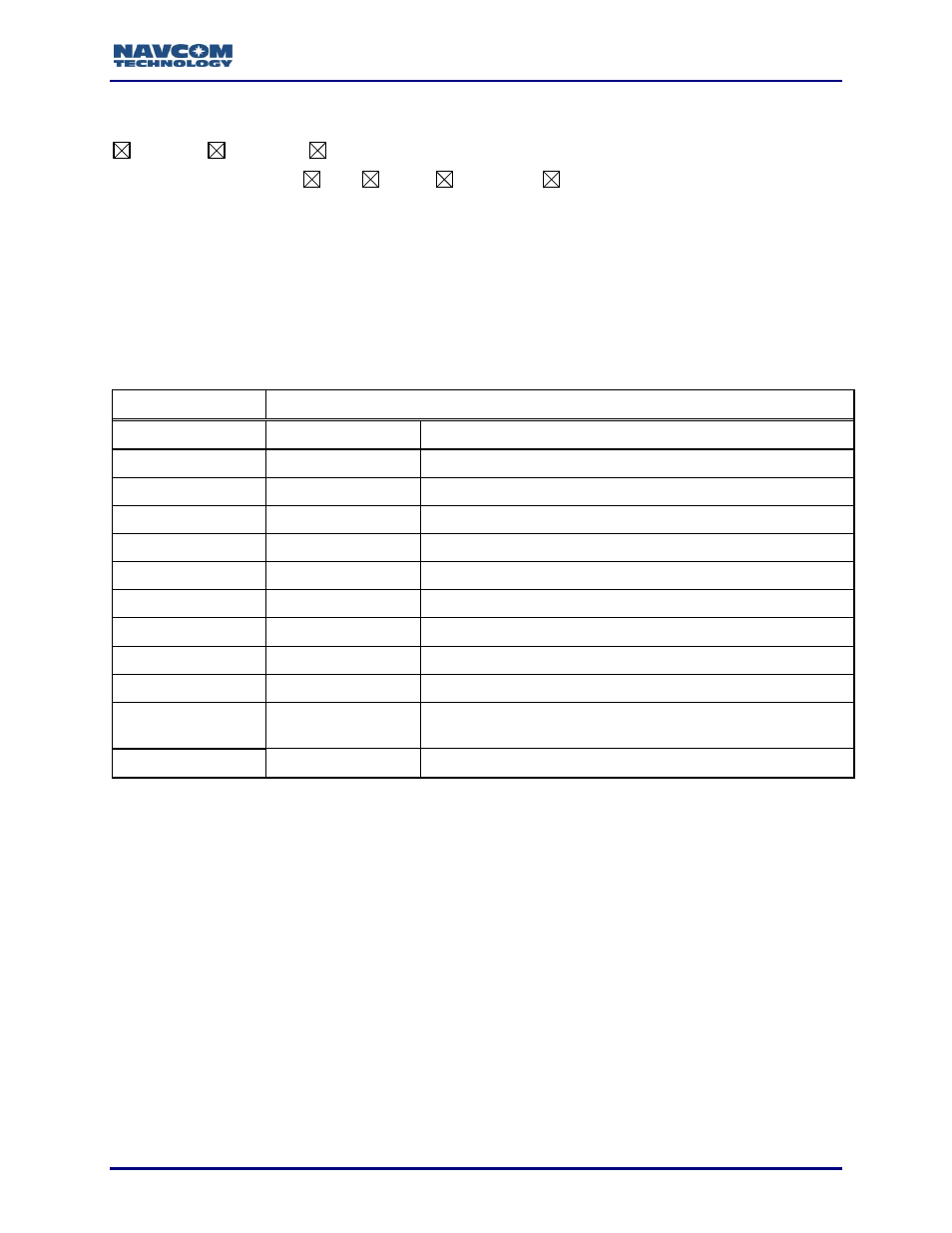Nmeagbs (ascii), Table 145: gbs message output format – NavCom Sapphire Rev.J User Manual
Page 303

Sapphire Technical Reference Manual Rev. J
303
2.58 NMEAGBS (ASCII)
SF-3050
Sapphire
SF-3040
Supported Output Rate:
OFF
ONCE
OnChange
OnTime
OnChange
= when slow nav is completed (1Hz)
OnTime
= minimum 1Hz
This output stream reports Receiver Autonomous Integrity Monitoring (RAIM) data. Given that a
GNSS receiver is tracking enough satellites to perform integrity checks of the positioning quality
of the position solution, this sentence reports the output of this process, in compliance with
NMEA 0183 Standards version 3.0. The addition of Fields F9 and F10 bring this message in
compliance with version 4.1 of the NMEA standard.
Table 145: GBS Message Output Format
Output Format:
$GPGBS,UTC,Lat,Long,Alt,SVID,Det,Bias,StdDev,*checksum
Field#
Field Name
Description
F1
UTC
UTC time of the associated GGA or GNS fix (hhmmss.ss)
F2
Lat
Expected error in latitude (+/-9.9)
F3
Long
Expected error in longitude (+/-9.9)
F4
Alt
Expected error in altitude (+/-9.9)
F5
SVID
ID number of the most likely failed satellite (01-32)
F6
Detection
Probability of missed detection (9.9)
F7
Bias
Bias estimate on most likely failed satellite (9.9 meters)
F8
StdDev
Standard deviation of bias estimate (9.9)
F9
System ID
1 for GPS, 2 for GLONASS (NMEA v4.1 only)
F10
Signal ID
Specific frequency likely failed for the given satellite (See
Note 1) (NMEA v4.1 only)
F11
*CRC
Checksum
Example: $GPGBS,161816.00,0.0,-0.0,-.0,13,0.8,0.0,0.0*6C
1
The Signal ID is designed to show which Signal failed for that particular satellite.
NavCom receivers show satellites in the GPS constellation using 0, 1, 2, and 4.
GLONASS constellation uses 0, 1, and 3. In the event the receiver is configured
for dual-frequency and multiple signals failed, a 0 is reported. 0 is not used in
single-frequency mode. See the graphic on the next page.
